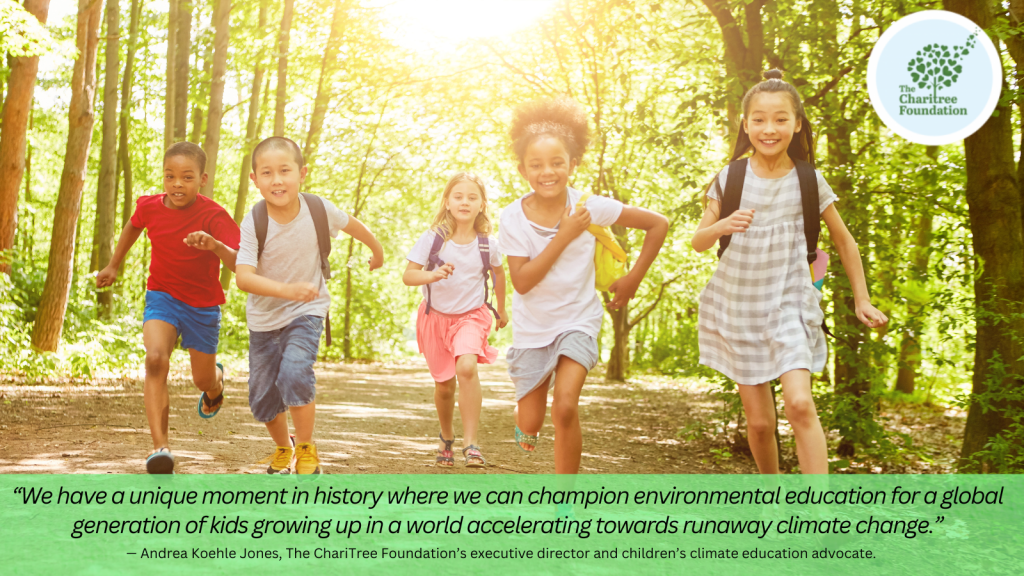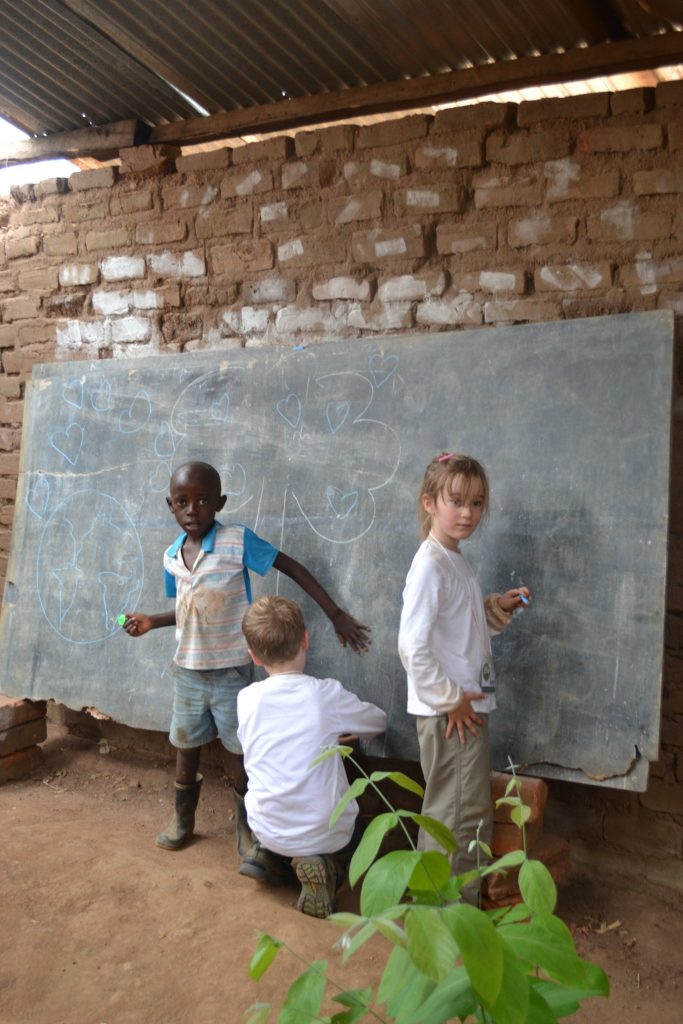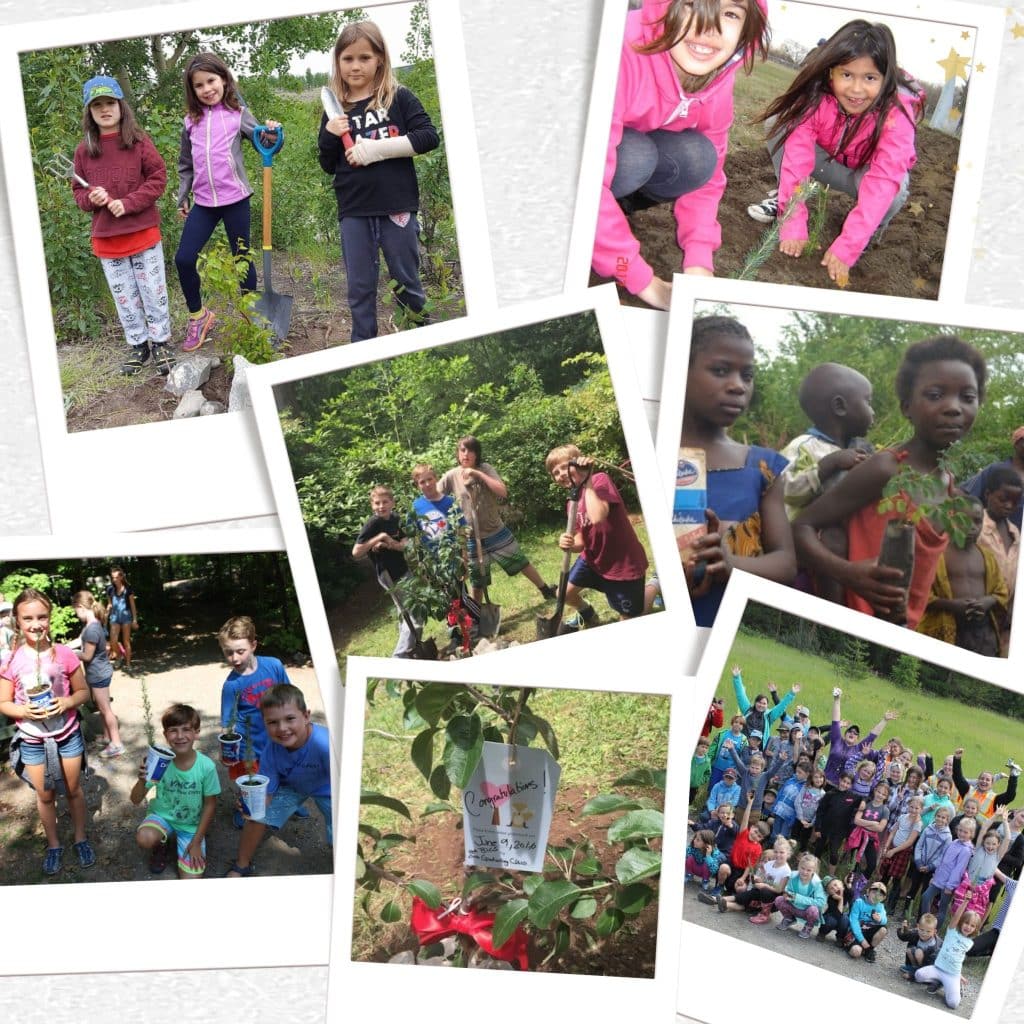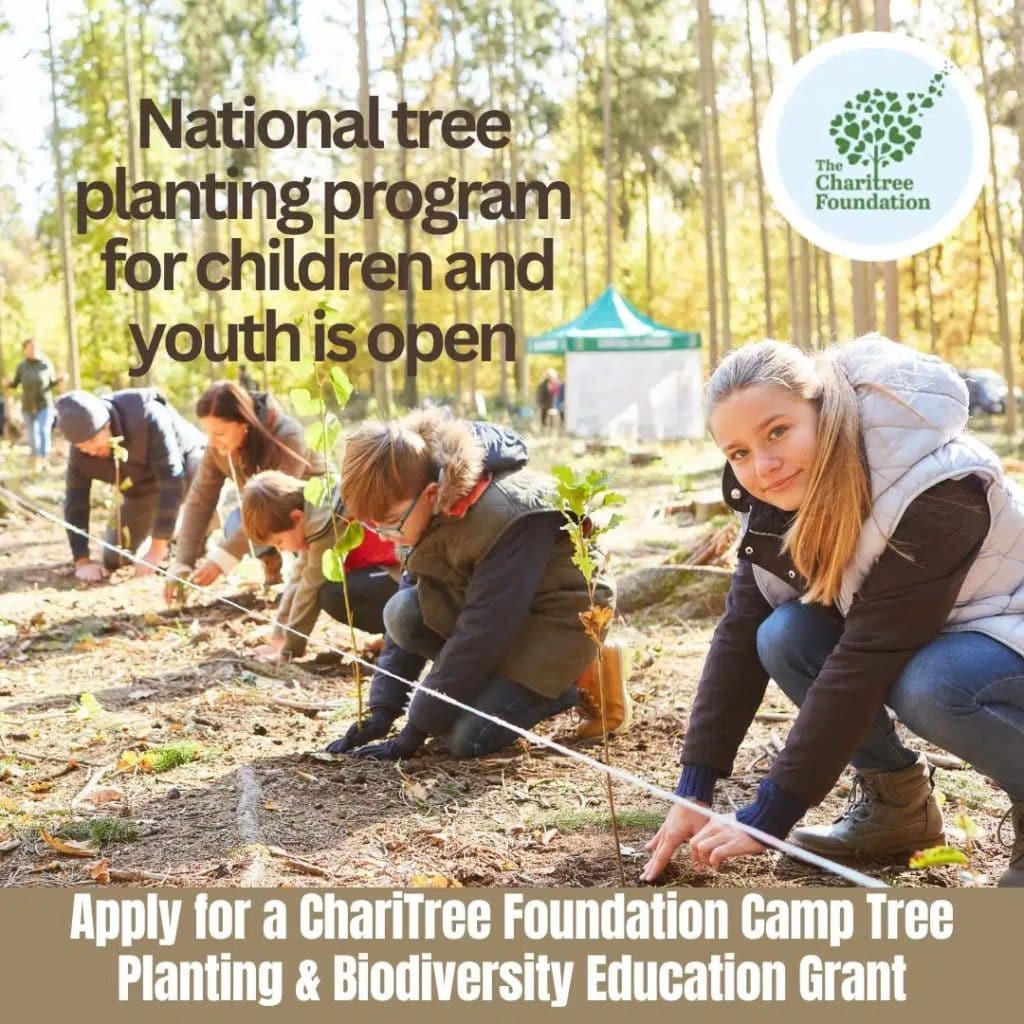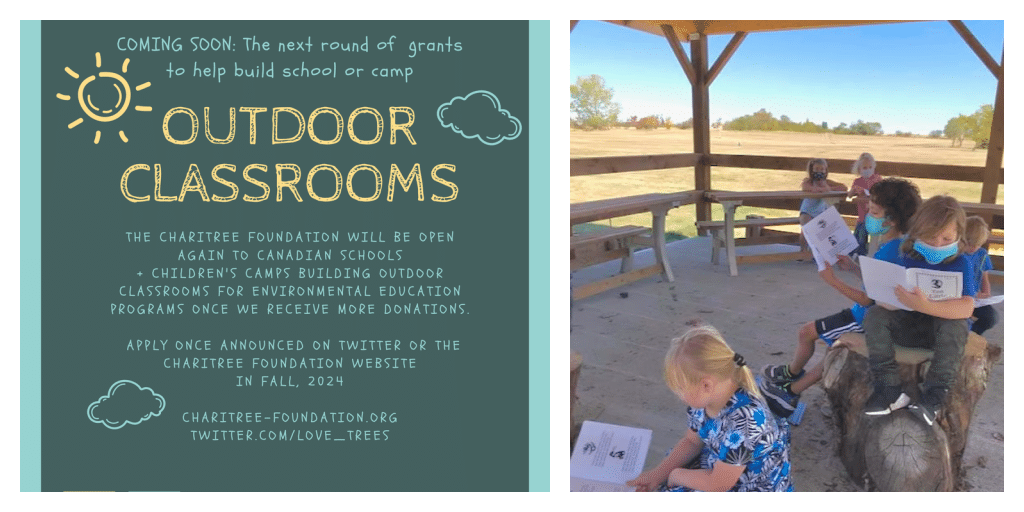To: Nabeel Munir, Chair, Subsidiary Body for Implementation
From: Andrea Koehle Jones, Children’s Environmental Education Advocate, Founder, The ChariTree Foundation. (Greater Vancouver, May 7, 2024)
The climate crisis is a child’s rights crisis so who is looking out for kids?
Environmental education is the key to safeguarding children and youth from future impacts of climate change
Protecting children from the impacts of climate change requires urgent and decisive measures from the international community. This should be our top priority. So far, the world’s response to the climate crisis has been slow and disheartening. Millions of children and youth are already paying the price for this inaction and half the world’s children – over 1 billion – are at extreme risk from climate-related events. i
That’s why kids everywhere are calling on world leaders and the international community to show courage and take thoughtful and urgent action. Environmental education is a lasting solution that gives kids opportunities to survive and thrive while contributing positively to their ever-changing world.
Children require a clean, healthy, and sustainable environment as a fundamental right. Their future depends on it. Yet, the triple planetary crisis — the climate emergency, biodiversity loss, and pervasive pollution — poses an urgent and extensive threat to children’s health and well-being. By listening to children, we can understand their concerns and eagerness to help the planet.
SB60 Input on Expert Dialogue on Children and Climate Change from Andrea Koehle Jones, Children’s Environmental Education Advocate, Founder, The ChariTree Foundation.
The ChariTree Foundation is a small, grassroots environmental education and United Nations Climate Observer organization run for free by executive director and children’s environmental education advocate, Andrea Koehle Jones. The ChariTree Foundation strives to reach children and youth especially kids in areas hardest hit by the impacts of climate change and youth who would otherwise not be able to participate.
For nearly 20 years, The ChariTree Foundation has focused on providing experiential, hands-on environmental education to children in Canada and the Global South in an effort to address future impacts of climate change on kids. If you are looking for effective and relevant adaptation solutions, a strong place to start is to borrow some of the project ideas The ChariTree Foundation has successfully implemented and supported such as rural and urban tree planting projects, outdoor classrooms and beach cleanup parties.
“Children are the most impacted and least to blame for the climate crisis. We have a unique moment in history where we can champion environmental education for a global generation of kids growing up in a world accelerating towards runaway climate change.”
— Andrea Koehle Jones, The ChariTree Foundation’s executive director and children’s climate education advocate.
Disproportionate impacts of climate change on children
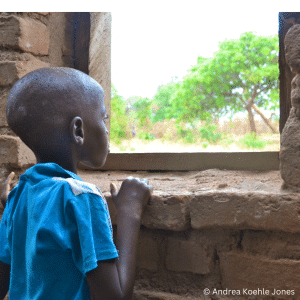
community school in Eastern Zambia. The mud floor building is
unsuitable for effective learning. Extensive storm damage and a
shortage of teaching materials, textbooks, desks, access to
adequate water supplies, sanitation, and washing facilities, as
well as lighting. (Petauke, Zambia) Photo: © Andrea Koehle Jones / The ChariTree Foundation.
Understanding the Disproportionate Impacts of Climate Change on Children
When we understand the current, disproportionate impacts of climate change on children, we are better equipped to develop solutions that help kids adapt to future challenges. These efforts can reduce vulnerability, build resilience, and minimize long-term negative consequences for children around the world.
Children are especially vulnerable to climate change due to their ongoing physical development, reliance on caregivers, limited mobility, and lack of decision-making power. As the impacts of climate change intensify, so do the physical, mental, and social consequences for children and youth.
PHYSICAL HEALTH IMPACTS
Heat-Related Illnesses
Rising global temperatures and extreme heat events—such as heat domes—put children at heightened risk of heat exhaustion, heatstroke, and dehydration, especially in vulnerable regions.
Vector-Borne Diseases
Climate change is expanding the range of disease-carrying insects like mosquitoes and ticks, increasing child exposure to malaria, dengue fever, and Lyme disease.
Water Scarcity & Waterborne Diseases

Children are at increased risk of cholera, typhoid fever, and other illnesses from contaminated water caused by floods, droughts, and inadequate sanitation infrastructure.
Food Security and Nutrition
Climate-driven crop failures, supply chain disruptions, and food price surges lead to shortages and malnutrition. These conditions can permanently affect children’s physical and cognitive development.
Respiratory Issues
Wildfire smoke, pollution, and climate-aggravated allergens worsen respiratory health, increasing childhood asthma and allergy rates.
Injuries and Fatalities
Sudden climate-related disasters—such as hurricanes, floods, cyclones, tornadoes, and wildfires—can result in serious injury or death, especially for children who are unable to escape quickly or safely.
families. Children in communities with limited disaster planning, early warning systems, disaster relief and critical infrastructure are more at risk.
MENTAL HEALTH IMPACTS
Anxiety, Depression and Trauma: Climate Change can also contribute to disheartening psychological distress in children leading to anxiety, depression, and trauma, with lasting ramifications for their mental health and overall well-being. In 2021 researchers from the UK, Finland and the US published the first large-scale global survey of climate anxiety in children and young people aged 16 to 25. The survey found that 84 percent were at least moderately worried about climate change, and 59 percent were very or extremely worried. The emotions that they described ranged from sad and anxious, to angry and powerless. Around half of those surveyed highlighted that their daily lives and functioning were affected by climate anxiety. This study reinforced the conclusions of a survey published in 2020 by the UK Royal College of Psychiatrists, which revealed that over half (57 percent) of child and adolescent psychiatrists surveyed in England, were seeing children and young people distressed about the climate crisis and the state of the environment.ii
SOCIAL IMPACTS
Displacement and Migration
Catastrophic climate-related disasters like floods, storms, and rising sea levels are uprooting families and forcing them to migrate. According to UNICEF, 43.1 million children across 44 countries were forcibly displaced due to weather-related disasters between 2016 and 2021. Of these, 95% (40.9 million) were displaced by floods and storms. While improved reporting and proactive evacuations account for part of this increase, droughts alone caused more than 1.3 million child displacements.
Displacement significantly increases climate-related risks for children—especially those who lack access to resources, healthcare, and familiar support networks. The result is often long-term disruption to their education, wellbeing, and future opportunities.
Education Disruptions
Each year, 40 million children have their education disrupted by disasters worsened by climate change—and the number continues to grow. Damaged infrastructure and unsafe conditions keep children out of school, depriving them of their right to education and critical opportunities for development.
These disruptions also limit children’s access to environmental education, which can be essential for building the knowledge, confidence, and resilience they need to survive and thrive in a rapidly changing world.
Poverty Cycles
Climate change deepens existing cycles of poverty and inequality, disproportionately impacting children in marginalized communities who already lack access to basic services and opportunities. Without support, they are unable to cope with climate impacts, let alone access empowering tools like environmental education.
To break this cycle, adequate Loss and Damage funding is essential. Children must be given the chance not just to survive climate impacts but to participate in creating solutions.
Relevant policy solutions
By teaching children and teens about climate adaptation strategies and resilience building measures, they can actively participate in efforts to address the challenges posed by climate change. This includes learning practical skills such as tree planting, beach cleanups, disaster preparedness and water conservation. Environmental education solutions are especially powerful when we look for strategies to address future impacts of climate change on kids. Let’s work together to:
PROTECT the lives, health and well-being of children and youth around the world. This includes funding and providing access to environmental education to help kids cope with future climate impacts by becoming informed, proactive, compassionate and resilient when addressing the current and future challenges posed by climate change.
Honour, Broaden, and Fund Climate Agreements with Children in Mind
We must honour, broaden, and fund ambitious international climate change agreements—with a special focus on child rights and environmental education for everyone, especially children and youth.
These agreements must include children in decision-making processes, not just as beneficiaries but as meaningful participants shaping their own future.
Educate Every Child
We must support transformative climate education—both formal and informal—at all levels. This includes:

- Science-policy interface education
- Lifelong learning opportunities
- Culturally inclusive learning that recognizes the worldviews, values, and knowledge systems of Indigenous peoples and local communities
When children understand climate change and how it affects their lives and ecosystems, they are far more likely to make a lifelong commitment to protect the environment for themselves and future generations.
Awareness, Empowerment, and Resilience Building
Environmental education increases children’s awareness of the causes and impacts of climate change, empowering them to:
- Advocate for solutions
- Take direct action, such as tree planting or beach cleanups
- Influence others—from family and teachers to local leaders
Through education, children become active climate participants—raising awareness, promoting sustainability, and contributing to climate solutions in their communities.
Additionally, environmental education helps build resilience, teaching vital adaptation strategies such as:
- Water conservation
- Disaster preparedness
Examples include water-saving initiatives and wildfire readiness programs in British Columbia. When children see that people around the world are working—often behind the scenes—on climate adaptation and mitigation, it gives them something powerful: hope.
MODELLING SUSTAINABLE PRACTICES
When parents, teachers, everyone leads by example and supports environmental education opportunities we grow empowered kids interested to adopting eco-friendly behaviors that combat climate change. Through critical thinking fostered by environmental education, children can identify climate change disparities and grow up to help develop innovative solutions, promoting equity, compassion and social justice. Engaging in environmental education from a young age fosters a long-term perspective on environmental stewardship, equipping children to grow-up to support and implement sustainable solutions that mitigate climate change impacts for future generations.
Climate action and nature protection starts with education.
Environmental education is a vital key to unlocking lasting solutions to safeguard children by helping to minimize the disproportionate impacts of climate change on children in the future. The solutions underway by The ChariTree Foundation are simple, free or low cost, and easily applied almost anywhere — and fun!
While the scale of climate change may seem daunting, The ChariTree Foundation honours individual actions that collectively have powerful results. Our grassroots approach aims to connect children to nature by supporting championing education and helping to build outdoor classrooms. This hands-on learning empowers kids to appreciate and protect nature, become ambassadors for climate action, builds their leadership skills, and gives them hope. It also reduces their stress while building critical thinking, creativity, resiliency, and social skills. Here’s what we have been doing.
Learning how to plant a tree
“Planting a tree is an act of hope for the future and children need to have hope now more than ever.” — Andrea Koehle Jones, The ChariTree Foundation’s executive director and children’s climate education advocate.
A Tree for Every Child
ChariTree’s ‘A Tree for Every Child’ Program strives to give as many children as possible a tree of their own. The goal is simple yet powerful: support environmental education programs for children by giving them a native tree to plant at their home, school, or camp—an opportunity to connect with nature and make a lasting, positive contribution to the planet.
When Children Plant Trees, They Learn:
- Hands-on experience changing the world by planting and caring for a tree
- STEM learning through tree science and local ecology
- Forest connectivity and cooperation
- Compassion for living things, especially trees
- Tree conservation and reforestation
Over 120,000 Children Have Planted Trees
In the past decade, more than 120,000 children have planted trees through ChariTree-supported programs at summer camps across Canada—and internationally in Tanzania, Kenya, Ethiopia, and Nepal.
The ChariTree Foundation works directly with children’s camps, schools, and community groups, sourcing native tree seedlings and delivering them to children across regions. Many of these trees help rewild land impacted by wildfires, storms, or insect infestations.
Tree planting instructions and activity ideas are provided online, empowering educators and youth leaders to integrate tree planting into environmental education.
2024 Camp Tree Planting & Biodiversity Education Grant
In 2024, The ChariTree Foundation launched its Camp Tree Planting & Biodiversity Education Grant to help children’s camps across Canada purchase and plant native tree species—such as white spruce, Douglas fir, or apple trees.
Campers work with staff to plant and care for their trees as part of meaningful camp-based environmental education programs—building skills, awareness, and hope for a greener future.

Every Tree Leaves a Legacy
When camp staff plant trees with children, it creates a shared learning moment and an act of environmental stewardship. Every tree planted by kids leaves a lasting impact, showing them that they are part of something much bigger than themselves.
“There is something magical about the act of planting a tree. It is one of the best ways to foster hope and empowerment for a greener future. Kids love taking part in this meaningful act. Thank you for the opportunity.”
— Jacob Rodenburg, award-winning educator, author, Executive Director of Camp Kawartha, and instructor in environmental education at Trent University, ON
“Getting the trees each year is a big thrill for us. I think we have been involved for 5+ years with the program. It was a difficult year with the high heat in the early summer, but we did our best to get trees in the ground and established early. It is rewarding to see trees from a few years ago doing well. We are always working to connect our campers with the natural environment.”
— Jeff Brown, Owner/Director, Camp Otterdale, Lombardy, ON
“The children had a great day outside learning about the trees and how to plant and care for them. As the trees grow, they will provide important habitat and their shade will help maintain a healthy, cool water temperature in Joseph Creek. Thank you ChariTree!”
— Blue Lake Camp, Cranbrook, BC
Building Outdoor Classrooms
Since the pandemic, The ChariTree Foundation has expanded its climate education efforts by supporting the creation of outdoor classrooms at schools and camps across Canada. The goal: get kids outdoors and increase access to hands-on environmental and biodiversity education.
“Outdoor classrooms offer students powerful environmental education opportunities and build connections with each other and the natural world around them.”
— Andrea Koehle Jones, Executive Director, The ChariTree Foundation
Benefits of Outdoor Classrooms:
- Foster a deeper appreciation for the natural world and promote environmental stewardship
- Improve health and well-being through movement, exploration, and reduced stress
- Boost attention spans, creativity, and cognitive function
- Offer fast and flexible learning spaces after climate disasters
Inspiring Beach Cleanups
You’ll be amazed by what a group of enthusiastic kids can accomplish in just a few hours! The ChariTree Foundation provides instructions and support to host beach cleanup parties and environmental education events.
Beach Clean-Up Takeaways for Kids:
- Get outdoors, be physically active, and reduce stress
- Build appreciation for nature and empathy for aquatic life
- Gain hands-on learning about litter, marine life, and coastal ecosystems
- Develop hope, empowerment, and responsibility as future climate leaders

Kids Need More Hopeful Environmental Education
Other Important Solutions Include:
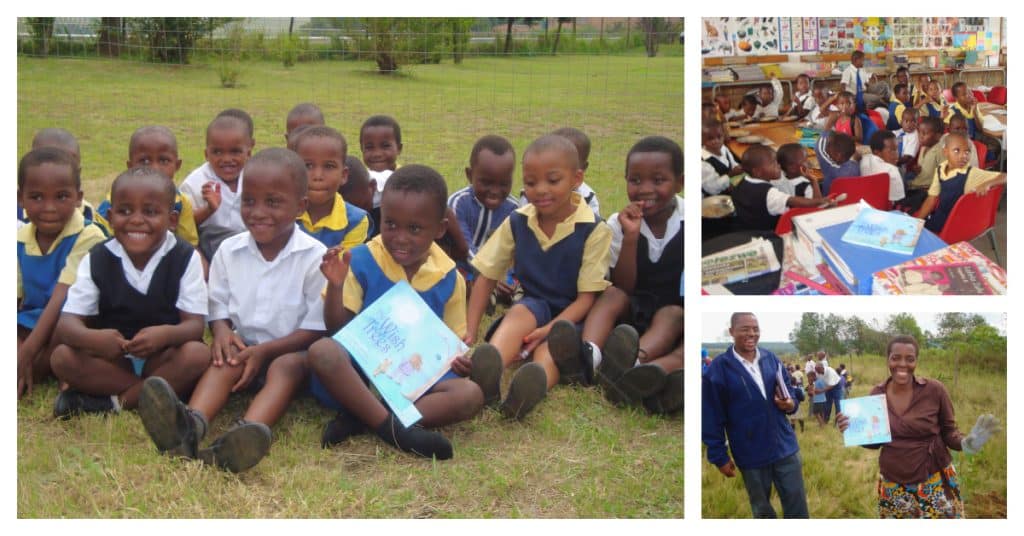
The Wish Trees: How Planting Trees Can Help Make the World a Better Place.
“Planting a tree is an act of hope. And that is a message our children need to hear now more than ever.”
— Andrea Koehle Jones, Author and Children’s Environmental Education Advocate
- Encouraging publishers to prioritize inclusive environmental fiction and nonfiction for children—printed on 100% tree-free recycled paper, and freely distributed to low-income families and libraries.
- Developing interactive media and educational games with hopeful climate themes.
- Empowering parents and teachers to talk about climate, biodiversity, and solutions.
- Incorporating youth voices into climate policy decisions.
- Advocating for environmental education access for all children and preparing them for a rapidly changing world.
Thank You for All You Are Doing for Children
Warmly,
Andrea Koehle Jones (she/her)
UN Climate Observer & Children’s Environmental Education Advocate
Founder | The ChariTree Foundation
Canada’s environmental education and UN Climate Observer organization for children and youth
charitree-foundation.org
info@charitree-foundation.org
“The climate crisis is a child’s rights crisis—so who is looking out for kids? Environmental education is the key to safeguarding children and youth from future climate impacts.”
— Andrea Koehle Jones, Greater Vancouver, May 2024
Acknowledgment of Territory
I acknowledge and am thankful to live, learn, and work on the territory of the Coast Salish people, specifically the Sḵwx̱wú7mesh (Squamish) Nation.
SB60 Expert Dialogue Input (May 7, 2024)
Submitted by: Andrea Koehle Jones, Founder and Executive Director, The ChariTree Foundation & Co-Founder of The FirstLine Foundation.
The ChariTree Foundation location: Greater Vancouver, British Columbia, Canada
This document was submitted in advance of SB60 – Expert Dialogue on Children and Climate Change. A notable feature of SB60 was the Expert Dialogue on Children and Climate Change, held on June 4, 2024, in Bonn, Germany, marking the first formal UNFCCC event dedicated to children’s voices in climate action. This dialogue focused on integrating children’s perspectives into climate policy, emphasizing their rights, education, and resilience-building in a changing climate
Next UN meeting The ChariTree Foundation and Executive Director will attend is SBI‑4 in Nairobi (May 2024). The 4th meeting of the Subsidiary Body on Implementation (SBI) under the Convention on Biological Diversity (CBD) will take place in Nairobi, Kenya.
This session is expected to focus on reviewing progress in implementing the CBD, identifying strategic and operational actions, and strengthening means of implementation.
The ChariTree Foundation
The ChariTree Foundation is a United Nations Climate Observer Organization, putting children’s rights at the forefront of climate action to improve education, health, and future outcomes for children around the world.
🌐 Website: charitree-foundation.org
Suggested Citations
“The climate crisis is a child’s rights crisis—so who is looking out for kids?
Environmental education is the key to safeguarding children and youth from future impacts of climate change.”
— Andrea Koehle Jones, Founder, The ChariTree Foundation (May 2024)
“Children are the most impacted and least to blame for the climate crisis. We have a unique moment in history where we can champion environmental education for a global generation of kids growing up in a world accelerating towards runaway climate change and devastating biodiversity loss.”
— Andrea Koehle Jones, Founder, The ChariTree Foundation (May 2024)
Cover Photograph: Robert Kneschke / Canva Pro. Children running together at summer camp.
Sources
i Save the Children, How is the Climate Crisis Impacting Children? 2024 website, London, UK ii EcoParent Magazine, Climate Anxiety and Kids: How to Help Manage Their Distress in These Uncertain Times, by Andrea Koehle Jones, Vancouver, November 2022.
iii United Nations Children’s Fund, The climate-changed child: A children’s climate risk index supplement, UNICEF, New York, November 2023.
iv United Nations Children’s Fund, Weather-related disasters displace 43.1 million children in six years, UNICEF reports, UNICEF UN News Global perspective Human stories, New York, October 2023. v EcoParent Magazine, How to Host a Kid’s Tree-Planting Party: Get kids outdoors & care for our planet with more sustainable fun by Andrea Koehle Jones, Vancouver, March 2024.
vi EcoParent Magazine, How to Host a Kids’ Beach Clean-up Party: Helping the Planet & Having Fun Doing It! by Andrea Koehle Jones, Vancouver, March 2023.

